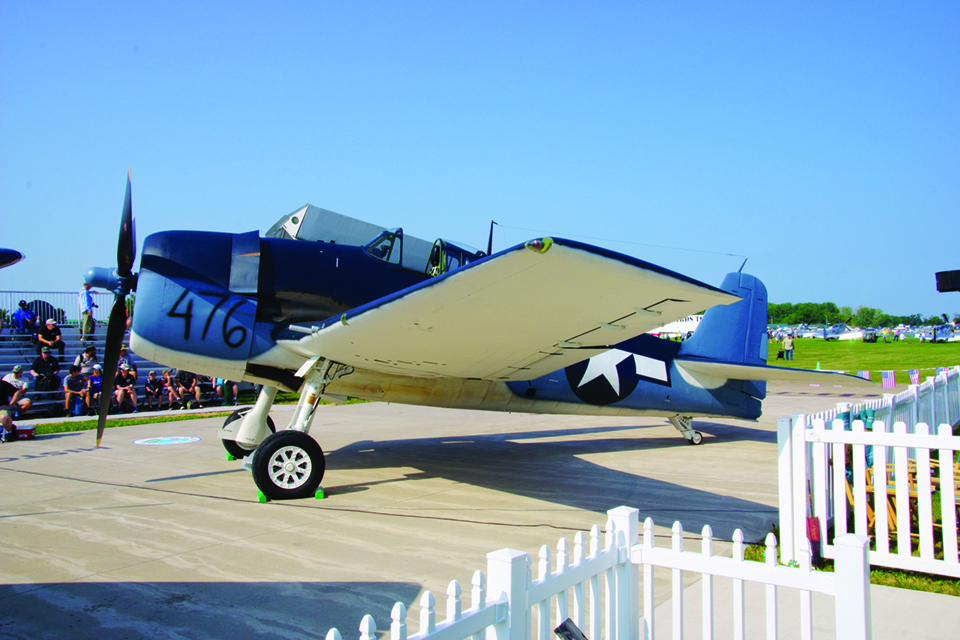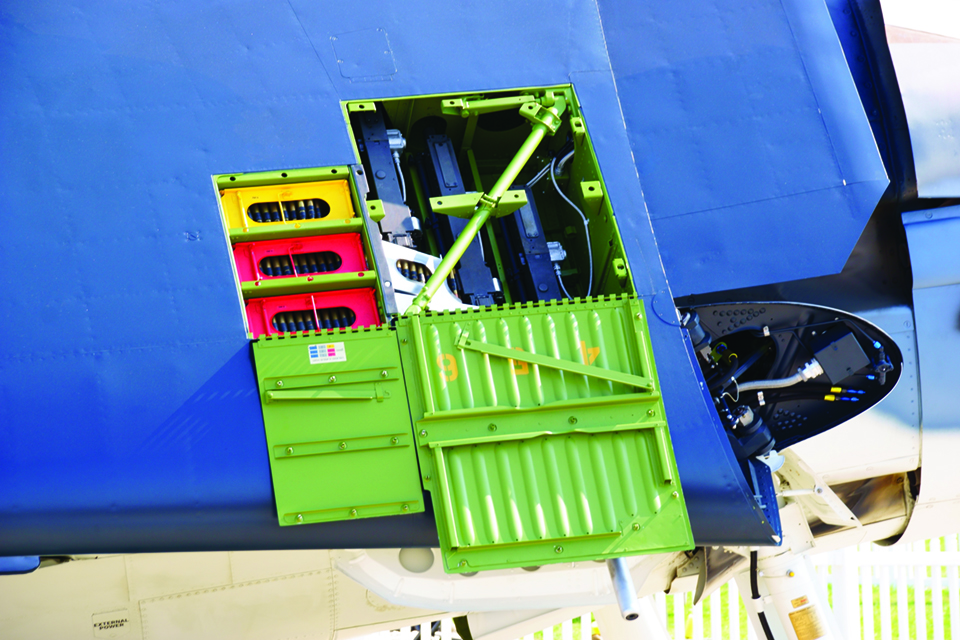Hellcat's Hues Are Quietly Competent
By Frederick A. Johnsen
July 27, 2019 - Sometimes less is more. The subtle nuances of the paint scheme of the newly restored F6F-3N Hellcat at EAA AirVenture Oshkosh 2019 are muted compared to some warbirds. Yet the Hellcat hues speak volumes about the fighter's restoration, and about ambience during World War II.
If it is popular to pick colorful markings for a restoration, the Hellcat's team from the Collings Foundation and American Aero Services did a 180, and painted their Hellcat the way it looked the day it rolled out of the Grumman plant.
The team started with the basic triple-tone camouflage scheme consisting of insignia white undersurfaces and two distinct hues of blue for the sides of the fuselage and the top surfaces. They were careful to use the right amount of flattening and gloss, said restorer Vince Santorelly, to meet Navy specifications. That's a subtle thing that sees the tops of the dark blue wings shinier to replicate the glassy surface of the sea when seen from above, while the wing leading edges and fuselage sides are of a duller sheen. The Hamilton Standard propeller spinner is painted intermediate blue, matching color photos of wartime Hellcats.
Once the factory-fresh camouflage was finished on this Hellcat, the last three digits of its Navy Bureau of Aeronautics number, 476, were spray painted on the cowling as if hastily added on the production line. Grumman did that during the war to enable specific aircraft to be quickly identified as they were test flown and serviced before leaving for Navy operations, when the sprayed digits were removed.
Another time-honored message medium of the era was retained on the restored Hellcat. One of the black propeller blades carries chalked notes about gasoline and the pilot scheduled to fly the Hellcat, a quick shorthand used at Grumman.
This Hellcat has been the object of more than one restoration since its military service. Following combat in the Pacific, at Naval Air Station Norfolk a technical school used it as a training aid. A large section of skin was removed from the right side of the fuselage to reveal the interior. The fighter was restored in the late 1960s by Walt Olrich, and subsequently flew before becoming a static museum piece in the Marine Corps museum, followed by display in the Evergreen Aviation and Space Museum in Oregon.
When the Collings Foundation acquired this Hellcat, its restoration spanned seven years. The fuselage skin patch was replaced with an extensive new panel of aluminum that removes all traces of the former incision. But Rob Collings, who flies the Hellcat for the Collings Foundation, said much of the aircraft is original, with rivets driven by Grumman's own Rosie the Riveters still visible — a quiet testimony to their craft.
At a Warbirds in Review session earlier this week, Collings described what it is like to fly a Hellcat. Asked if it handles like the larger Grumman Avenger torpedo bomber, he said, "Thankfully, no!" Collings said the handling traits of the two Grummans can be explained as the difference of "a battleship to a PT boat." He said the Hellcat is easy to fly and a good gun platform. "It's very Grumman," he added, explaining it falls somewhere between the older Grumman F4F Wildcat fighter and the Avenger.
Navy pilots found the handling traits of the F6F to be advantageous as they racked up a 19:1 victory ratio over Japanese aircraft in the Pacific. Collings suggested the Hellcat is "the greatest naval fighter of all time," and it is difficult to argue with the results it achieved. "It's not necessarily the fastest airplane," he added, but the Hellcat was built for climbing and turning, and that was a game-changer against many Japanese fighters that were known for their maneuverability.
Visitors to the warbirds area at AirVenture 2019 can see the F6F-3N Hellcat on display, its quiet subtlety serving as a historical counterpoint to the flashy unit markings on other restorations on the field.


